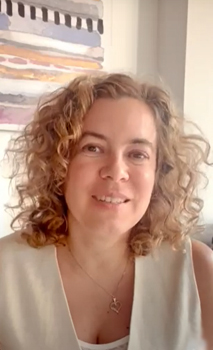Vitrification and storage of your eggs
This is the moment your eggs stop belonging to a single cycle. They are preserved in a way that lets you revisit them years from now.
What vitrification actually is
Vitrification is an ultra fast cooling technique that prevents ice from forming inside the egg. Ice crystals are what used to damage eggs in the old slow freezing methods. With vitrification, eggs are cooled so quickly that they instantly reach a glass like state.
This process is what protects the egg's structure, the chromosomes inside and its ability to function normally when thawed in the future. It is one of the reasons egg freezing today is far more successful than it was twenty years ago.
If you are comparing clinics or planning the financial side, remember that vitrification is part of the cost explained on the egg freezing cost page. Each lab handles storage slightly differently, but vitrification is universal.
Key points
- Vitrification prevents ice formation and keeps eggs structurally intact.
- Eggs are placed in special solutions that protect them before freezing.
- Once vitrified, eggs can remain stored for many years without degrading.
How eggs are vitrified step by step
Right after your retrieval, the embryologists start preparing the eggs. You are usually still waking up from sedation while this is happening. The timing is precise, and the environment is controlled because eggs are extremely sensitive at this stage.
First step: Identifying mature eggs
- Only mature eggs (M2 stage) can be vitrified.
- The embryologist checks each egg under the microscope.
- Eggs that are not mature are kept aside but not frozen.
Second step: Protective solutions
- Eggs are moved through a sequence of cryoprotectant solutions.
- These solutions prevent the cells from being damaged during cooling.
- Timing is crucial, and the embryologist moves quickly but carefully.
Third step: Instant freezing
- Eggs are placed on a small device called a straw.
- The straw is quickly submerged into liquid nitrogen.
- Cooling happens in a fraction of a second, turning the cell into a stable glasslike state.
How eggs are stored long term
After vitrification, the eggs are placed in long term storage tanks filled with liquid nitrogen. These tanks stay at a temperature far below what is naturally found on Earth. At that temperature, all biological activity stops entirely. It is the closest thing we have to pausing time for the cell.
Security and monitoring
- Tanks are monitored daily for temperature and nitrogen levels.
- Each patient’s eggs are labeled with unique identifiers to avoid mix ups.
- Backup power and backup tanks exist in case of emergencies.
How long can eggs stay frozen
- Eggs can remain frozen for many years without losing quality.
- What matters is the age at which the eggs were frozen, not how long they stay stored.
Who oversees the entire process
The vitrification and storage process is overseen by an experienced embryology team, and all clinical decisions are guided by Dr. Alejandro Castillo Peláez. He ensures that the lab and clinical timelines match perfectly and that the handling of each egg is performed with precision.
What happens when you decide to use your eggs
Using frozen eggs in the future involves thawing them, fertilizing them and creating embryos. This process is simple on your side but requires expertise on the lab side. The good news is that vitrified eggs thaw extremely well when the technique is consistent and controlled.
Success rates after thawing
- Most mature vitrified eggs survive the thawing process.
- The main factor is your age at the time the eggs were frozen.
- Our page on success rates explains how many eggs are recommended for a future pregnancy.
When most women decide to come back
- Some return within a couple of years.
- Others return five or ten years later, depending on how their life evolves.
- Egg freezing is meant to reduce pressure, so there is no deadline.
🙌 You're not alone — we’re here to guide you
Whether you're comparing clinics, navigating your options, or trying to understand what the next step should be, having clear medical guidance truly makes a difference.
Every patient who reaches out speaks directly with Dr. Alejandro Castillo Peláez or his international coordinator, Michaël — so your questions are answered by the people who are actually involved in your care.
Our role is simple: to help you access safe, transparent and personalized fertility treatment in Mexico, without overwhelm or guesswork.
Meet Dr. Alejandro Castillo Peláez
Dr. Castillo Peláez would like to connect with you for a consultation.
👇🏼 Book a consultation
Get answers to all your questionsabout fertility treatments in Mexico.
Thank you. We'll get in touch with you soon.

and reproductive biologist
Patient stories and testimonials
Read the great reviews from patients who have been fortunate enough to have Dr. Alejandro Castillo as their fertility specialist.









